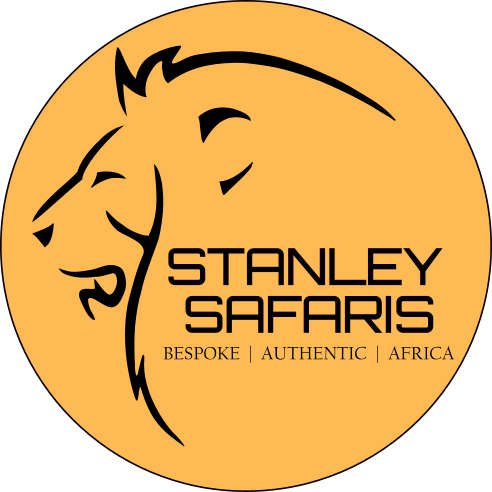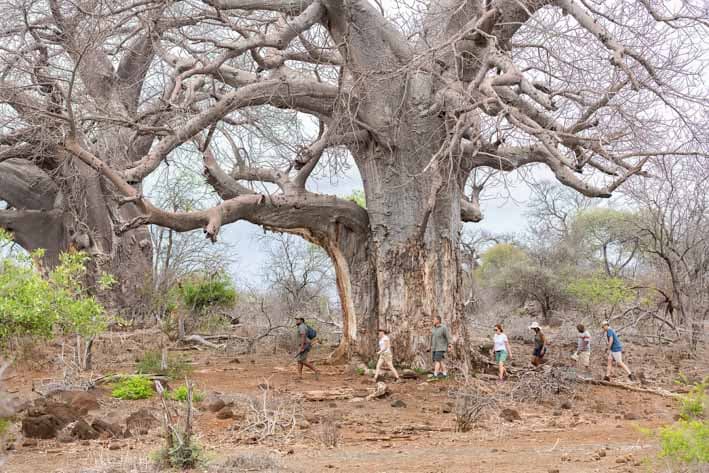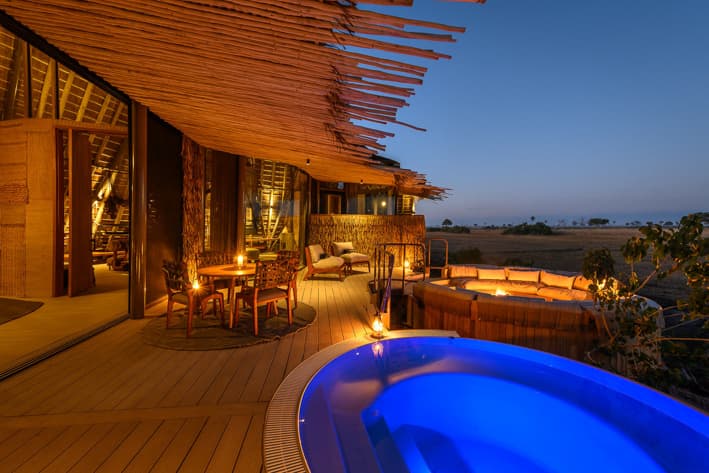Why we love safaris to Namibia
Discover more about one of Africa’s most epic safari destinations
With wide open skies and devastatingly beautiful landscapes, Namibia is an adventure travel mecca, and for good reason!
Nicknamed “the land God made in anger” by the bushman who live here, Namibia is one of Africa’s most epic remote travel destinations. Vast, desolate landscapes, lonely sand dunes and never ending open skies are just a few of the iconic sights to expect here.
Wedged in the south-west corner of southern Africa, Namibia is a land like no other and offers some of the most incredible, life-changing safari experiences on the continent. At Stanley Safaris, we hold a deep appreciation for this otherworldly country because it was where our founder Shaun’s love affair with Africa first began. Shaun did his first safari ever in Namibia, visiting with his parents in 1989. They travelled to Sossusvlei, Etosha, Damaraland, Epupa Falls and the Fish River Canyon. This first safari experience ignited in him a wanderlust that has shaped his entire life.
So why is Namibia so special?
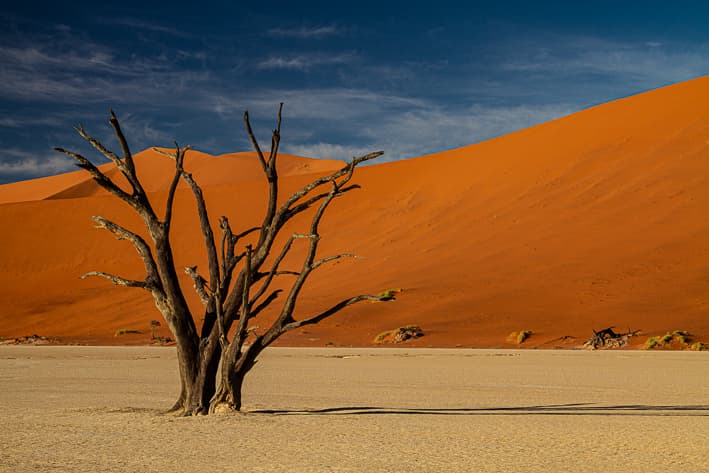
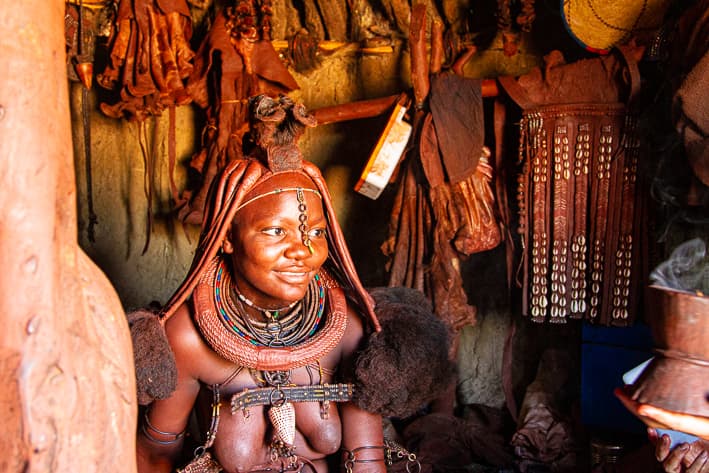
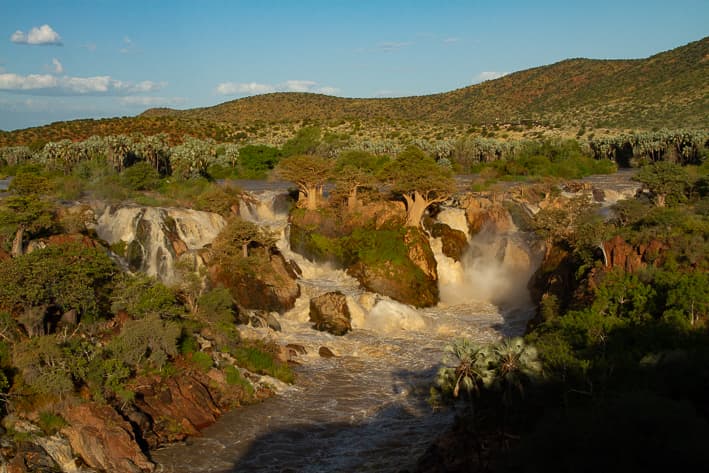
Namibia’s Otherworldly Landscapes
When most people think of safaris, they picture interacting with animals in their natural habitat, and while that is certainly true, safaris in Namibia offer a slightly different approach. Here, the star of the show is always the scenery. If you think Namibia is just an arid desert, think again.
The Namib Desert is sea of sand, where endless dunes stretch like silent waves towards distant horizons. Damaraland’s towering, jagged mountain peaks seem to slice through cloudless skies, and the shimmering white salt pans of Etosha juxtapose against the verdant woodlands of the Caprivi Strip, creating a contrast as beautiful as it is unexpected. Namibia’s landscapes are jaw-droppingly beautiful and incredibly humbling all at once.
Below is a list of Namibia’s national parks and regions that you have to include in your Namibia safari:
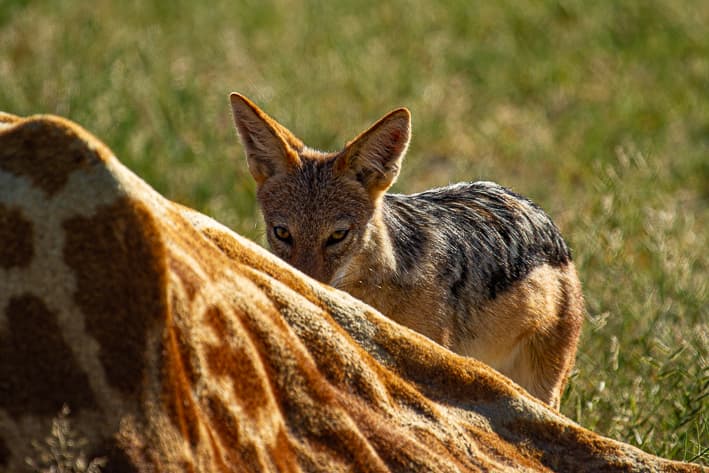
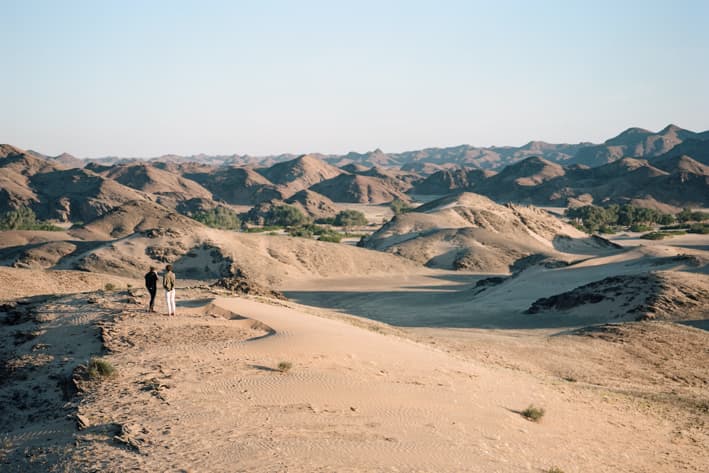
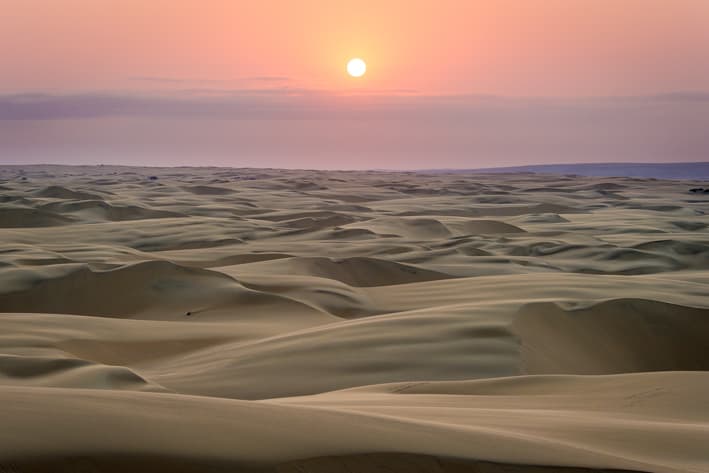
Sossusvlei
Sossusvlei, which means “dead-end marsh”, is a vast salt and clay pan that is surrounded by the red dunes of the earth’s oldest desert. Petrified black trees juxtapose against the white ground, creating a scene that inspires awe in its visitors. Sossusvlei can be found in the south of the Namib Desert, in a protected area known as the Namib Naukluft National Park.
Sossusvlei was created hundreds of years ago by the Tsauchab River, a seasonal river that runs through the Sesriem canyon, but is stopped by the walls of sand, creating the salt and clay pan.
Other notable sites in the Sossusvlei region is Dune 45 – the most photographed sand dune in the world, and Big Daddy, one of the biggest dunes in the area, at a huge 325m in height.
Where to stay in the Sossusvlei area:
The Wolwedans camps are located south of Sossusvlei in the NamibRand Nature Reserve. These luxury safari camps offer the very best of accommodation in Namibia. With simple, yet elegant suites, exceptional service and of course spectacular views, Wolwedans is our pick when visiting the Sossusvlei region.
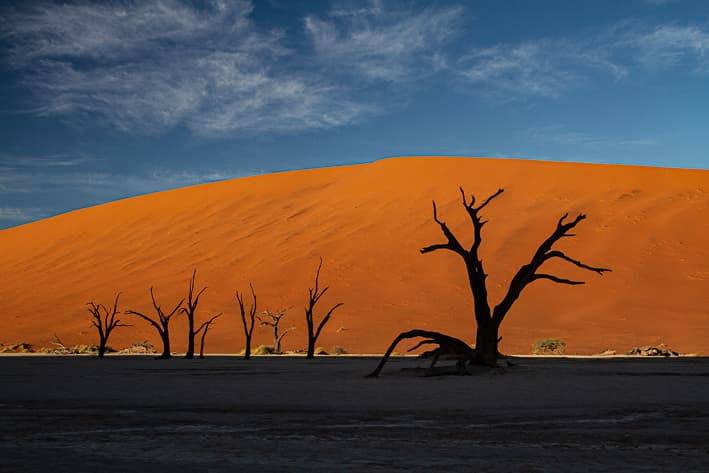
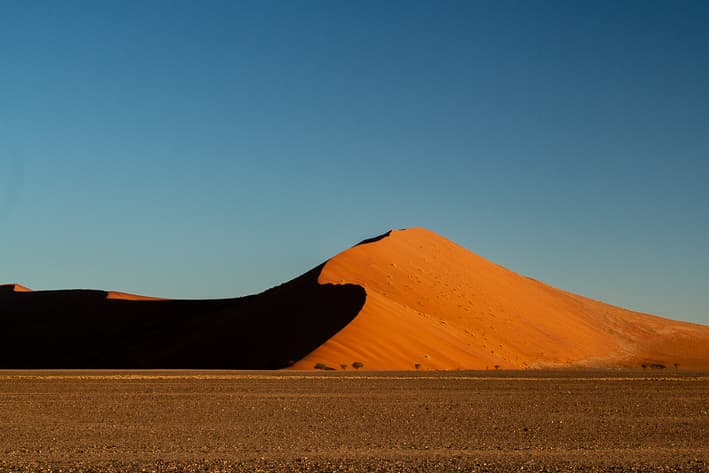
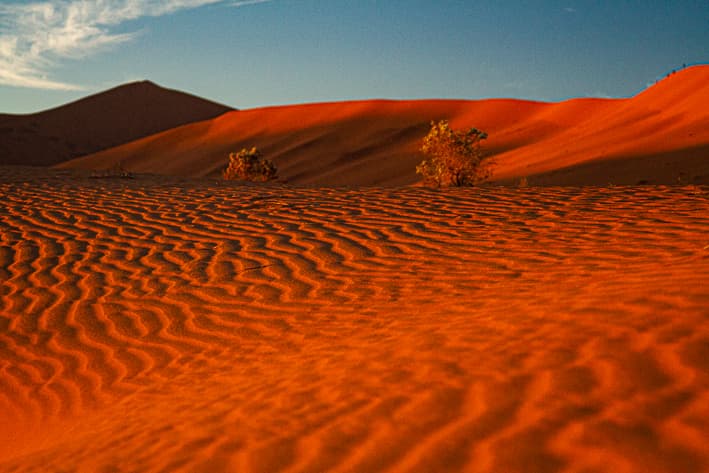
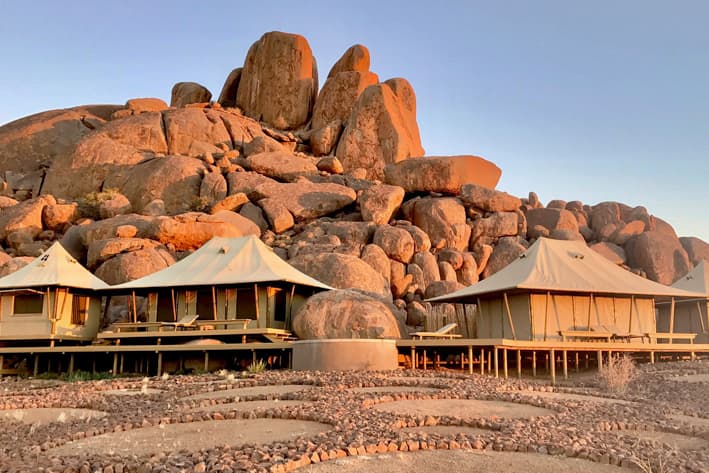
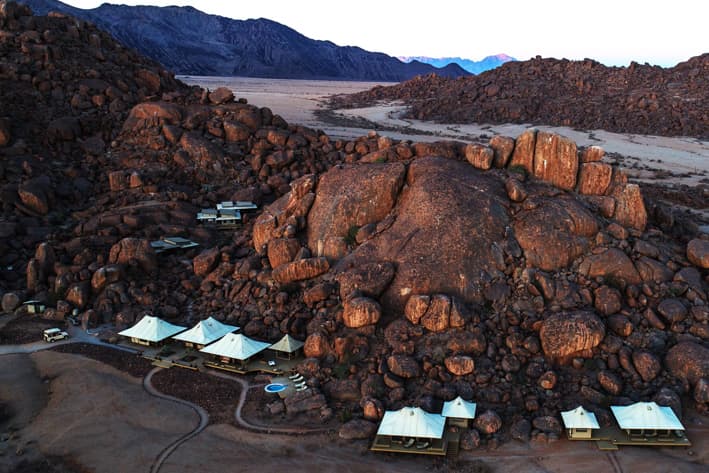
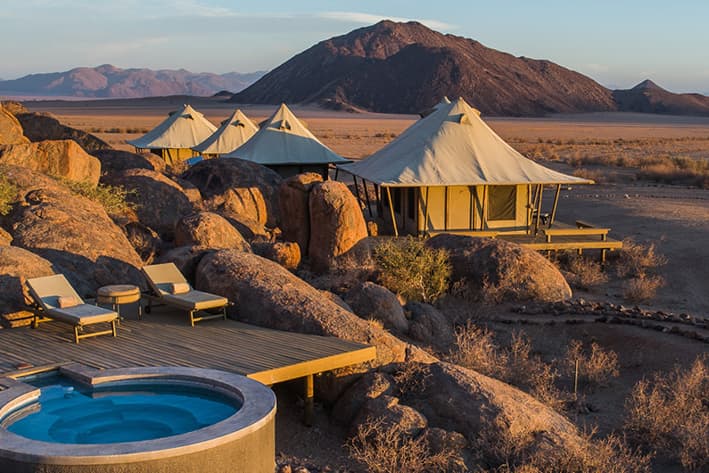
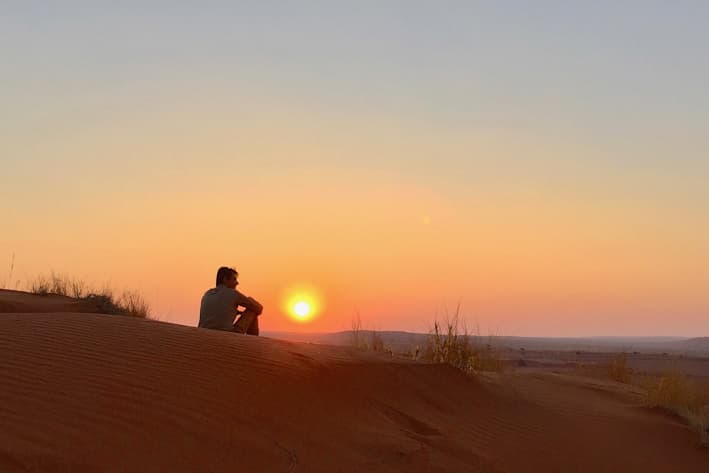
Etosha National Park
Namibia’s Etosha National Park is probably the most well-known game reserve in the country. It’s stark, arid landscapes are made up predominantly of the flat Etosha salt pan for which the park is named. The pumped waterholes in the park attract a large variety of animals, including four of the Big 5 – lions, leopards, elephant and rhino.
Fun fact: Etosha National Park is one of the best places in Africa to do a self-drive safari! This is because the roads in the park are very well maintained and the lack of vegetation makes it easy to spot wildlife without the professional eyes of a guide to help you out.
Where to stay in Etosha National Park:
Our pick of accommodation when visiting Etosha National Park has got to be the Onguma Nature Reserve. This 36 000ha private reserve is located on Etosha’s border, and features some incredible luxury accommodation. Onguma The Fort is our favourite of the camps. Spacious suites look out over a waterhole that teems with life.
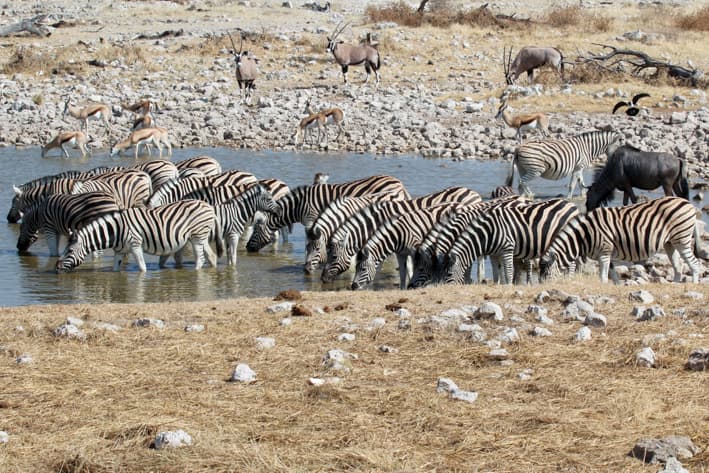
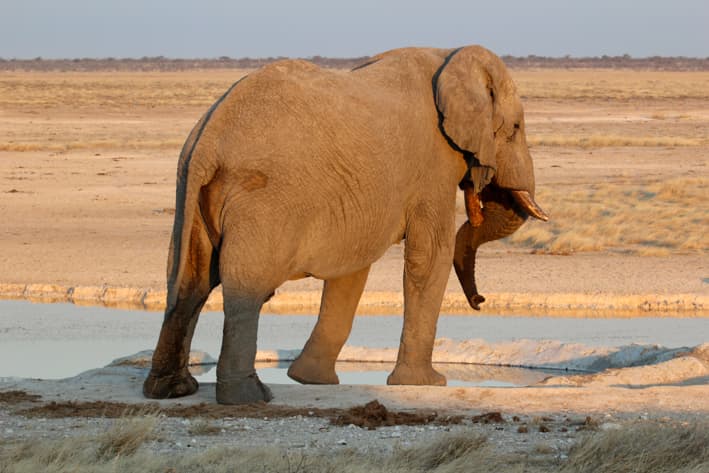
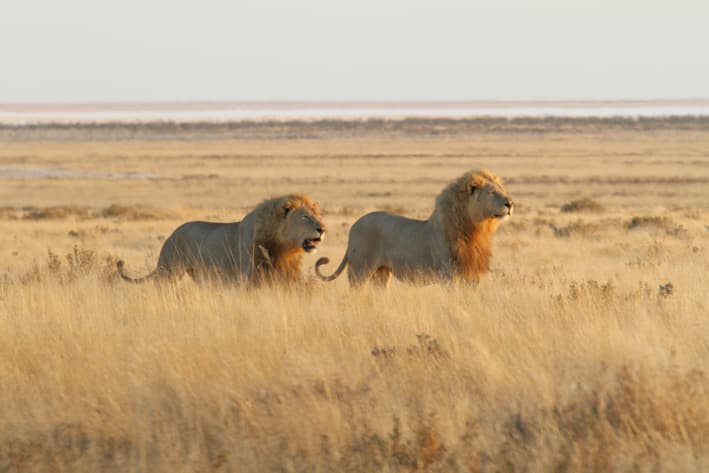
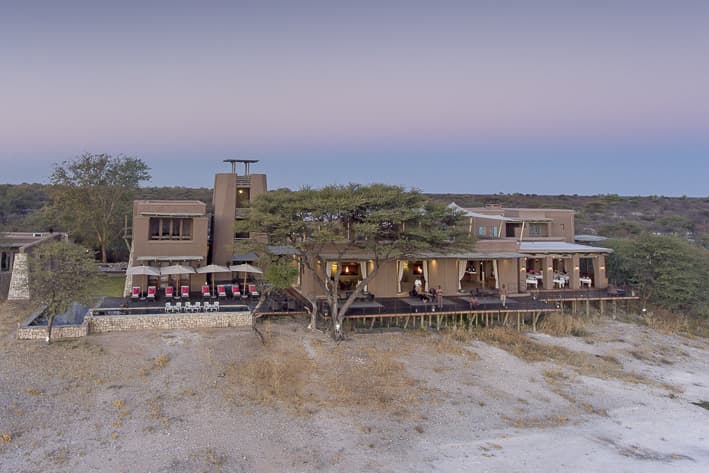
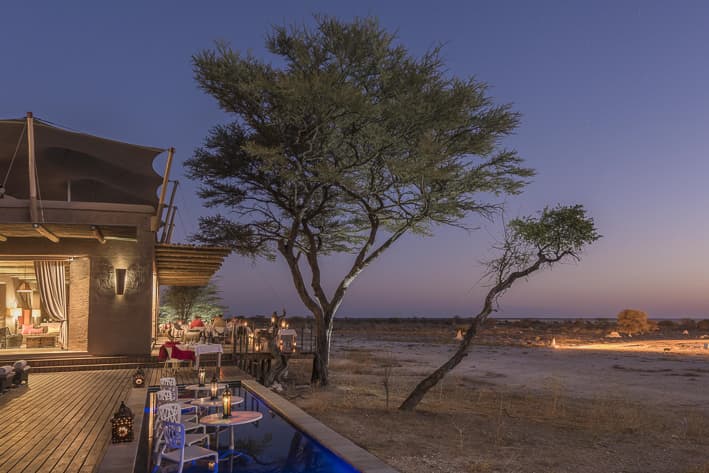
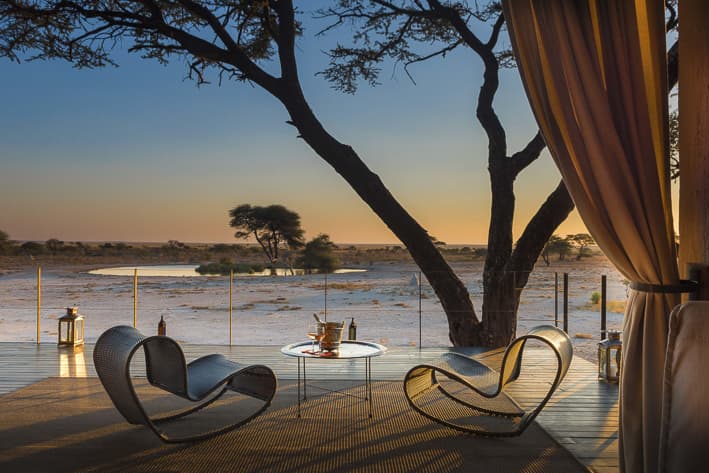
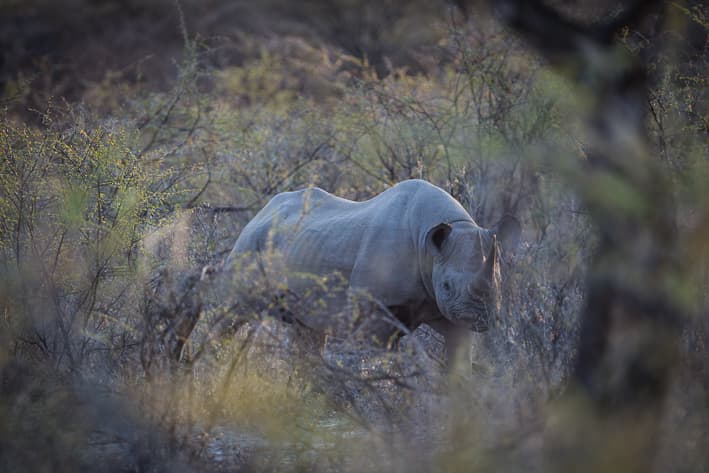
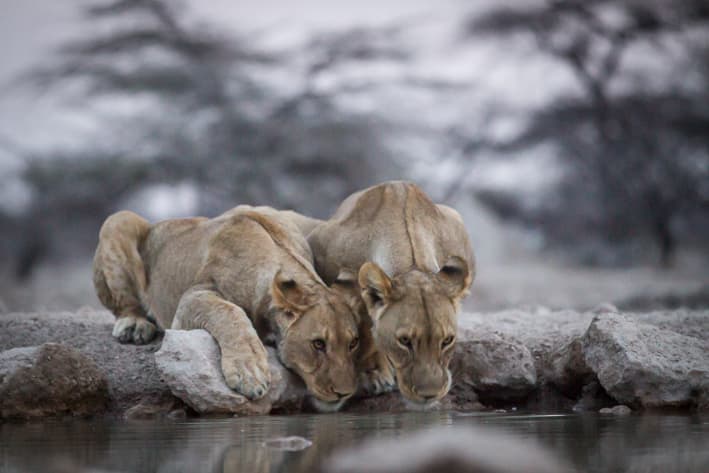
Skeleton Coast
Stretching all the way from Swakopmund in the south, to Angola’s border in the north, the Skeleton Coast is one of the most desolate coastlines on earth. It’s believed to have been named after the hundreds of skeleton-like shipwrecks that litter the coastline. Many ships have come to an end along this lonely Atlantic coast.
Beaches become the towering sand dunes of the Namib Desert, but despite its barren appearance, the Skeleton Coast is full of life. Colonies of Cape fur seals have made their home here, and predators like jackals, brown hyenas and even the occasional desert lion, take full advantage of the meal they provide.
Where to stay on the Skeleton Coast:
Shipwreck Lodge is the only lodge on a massive 146,600ha concession between the Hoarusib and Hoanib Rivers in the Skeleton Coast National Park. This makes it one of the most, if not THE most exclusive lodges in Namibia! Secreted amongst the dunes with views out over the Atlantic, Shipwreck Lodge takes its design cue from the wrecks that dot the coastline. Understated, elegant, simple and yet luxurious, it’s simply outstanding.
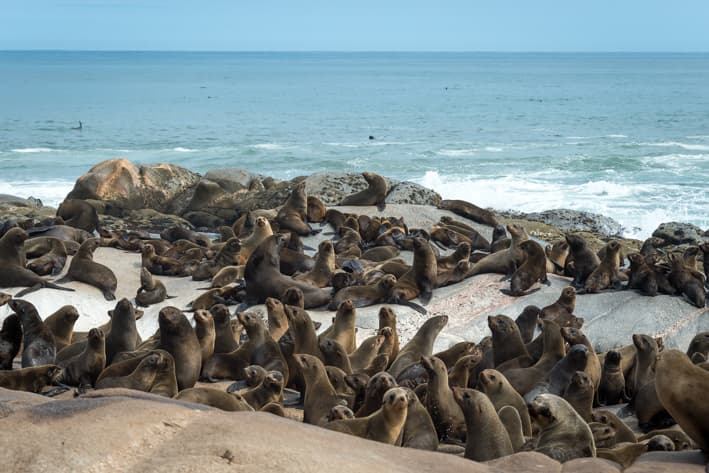
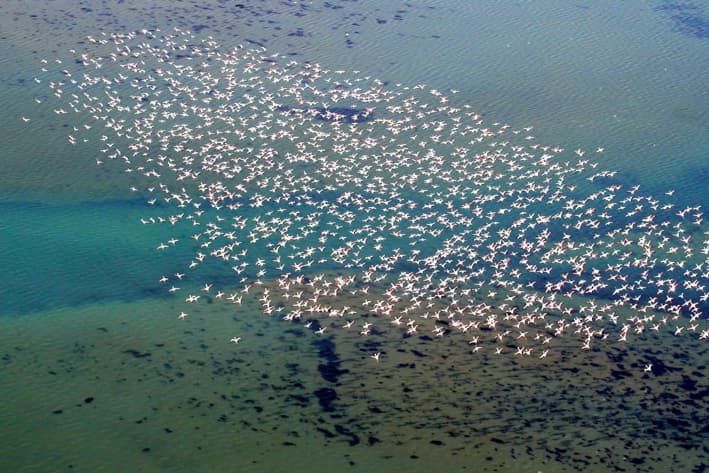
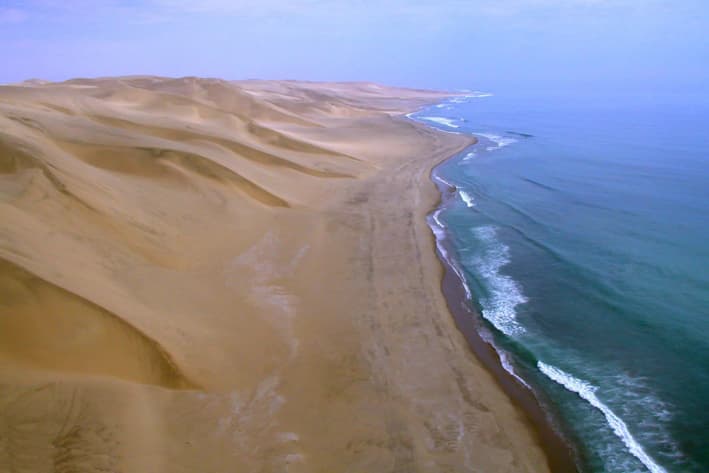
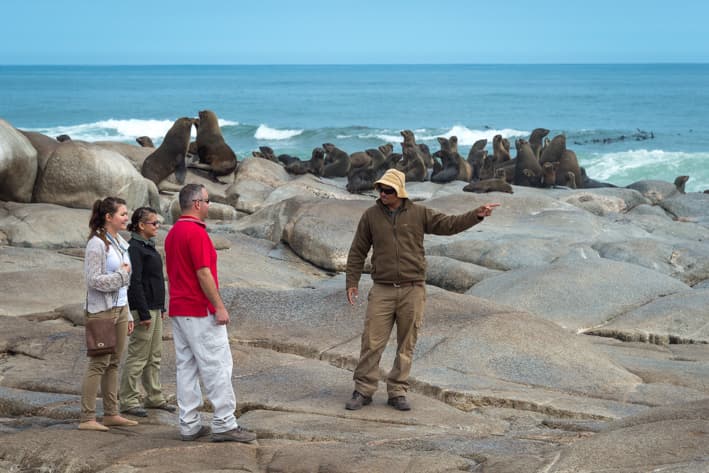
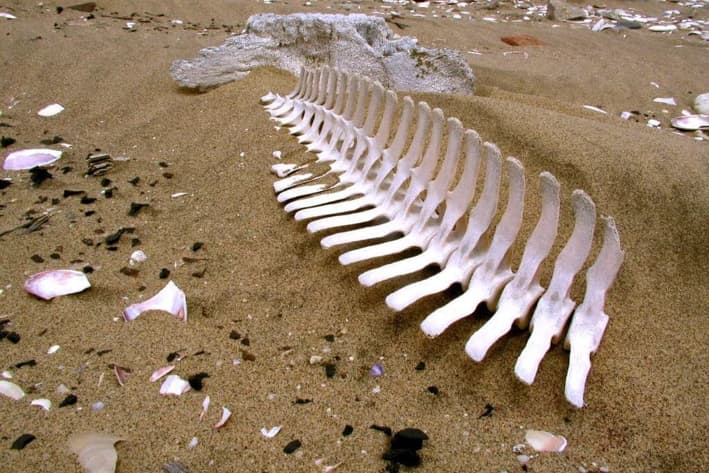

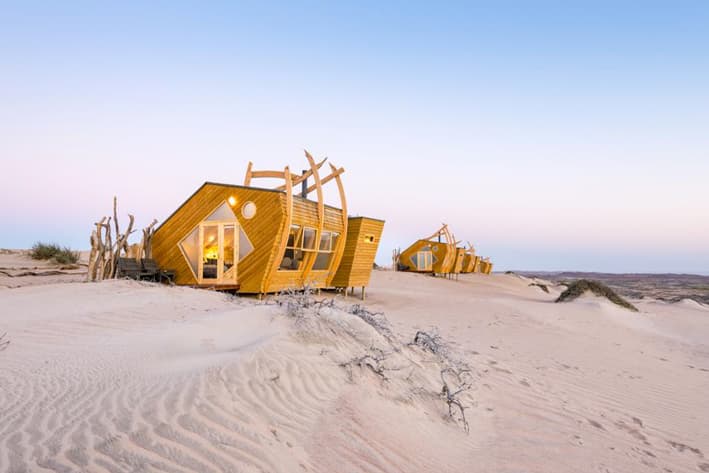
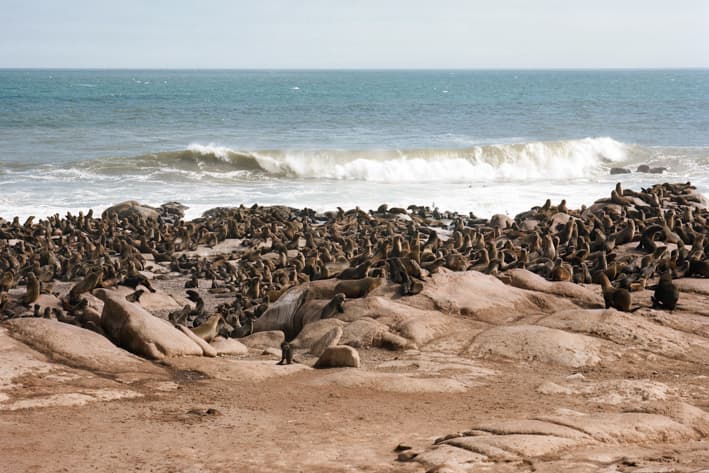
Damaraland
Damaraland is an expansive, rugged region in north-west Namibia. It is marked by wide, grassy plains and impressive mountains that have been indelibly marked by history, both geographic and human. This is where you’ll find unique rock formations caused by ancient volcanic intrusions, as well as petroglyphs – unique rock engravings that are thousands of years old! These fascinating art pieces are believed to have been carved by the San bushmen who inhabited the region around what is now Twyfelfontein.
Petrified forests also dot the landscape, which is interrupted by Namibia’s highest mountain – the impressive Brandberg, which towers 2573m high, and is home to a wealth of ancient rock art.
Where to stay in Damaraland:
Desert Rhino Camp in north-western Damaraland offers an immersive and exclusive wilderness experience. Here, visitors are offered the chance to see some of the last remaining free-roaming desert-adapted black rhino in Africa, as well as Hartmann’s zebra, giraffe, and the odd but extraordinarily hardy welwitschia plant. You have the option of tracking rhino by vehicle or on foot, along with experts from the Save The Rhino Trust.
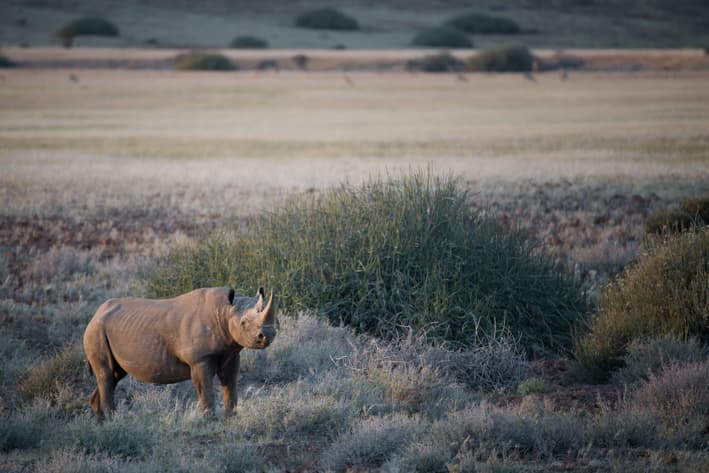
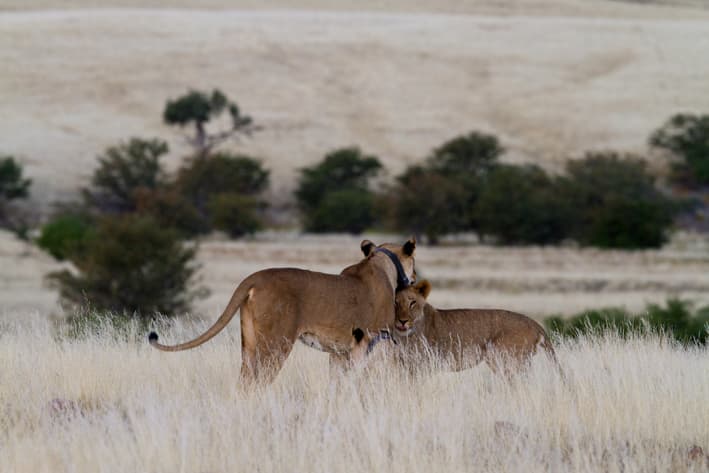
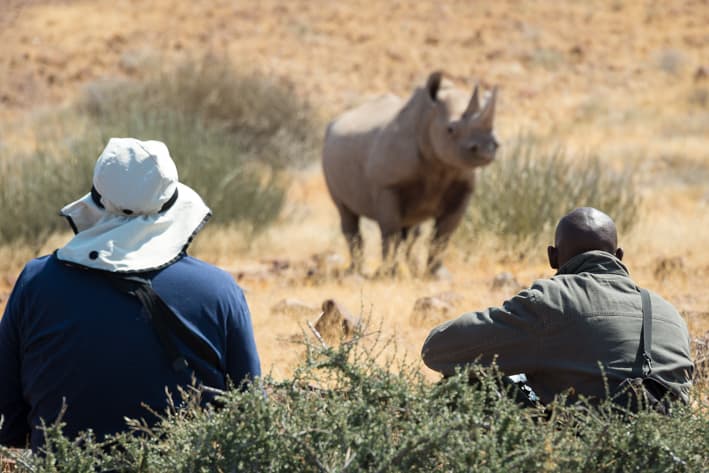
Kaokaland and the Kunene River
Kaokaland is further north than Damaraland, and even more remote – stretching right up to the border with Angola. This region is home to the Himba people, a nomadic tribe who still manage to live a traditional life in this harsh and challenging environment. The Himba women daub their bodies and their hair in a mixture of animal fat and red ochre, turning their skin a rich, deep red and creating distinctive, unique hair art in the process.
The Kunene River forms the border with Angola, and runs through the desert like a green snake. Its perennial waters give rise to oasis-like forests along its edges, complete with swaying palm trees and brightly coloured birds. One of our favourite spots along the river is Epupa Falls, a series of impossibly beautiful waterfalls that end in an equally scenic gorge, where huge baobabs cling to the rocks as if hanging on for dear life. Its remote location makes Epupa Falls difficult to access, but it is well worth the effort it takes to get here!
Where to stay in Kaokaland and along the Kunene River:
Our camp of choice in Kaokaland is Hoanib Valley Camp. This tented camp features six luxurious suites, designed to blend perfectly into this remote and rugged landscape. Visitors spend their days searching for desert adapted wildlife, getting to know the local people, and embarking on guided walks to better understand the small flora and fauna of the desert.
For accommodation along the Kunene River, our camp of choice is the luxurious Serra Cafema. This beautiful camp combines the best of both the desert and the verdant river banks. Guests can enjoy relaxing at camp, as well as setting out on boat cruises, walking safaris, quad biking trips and more.
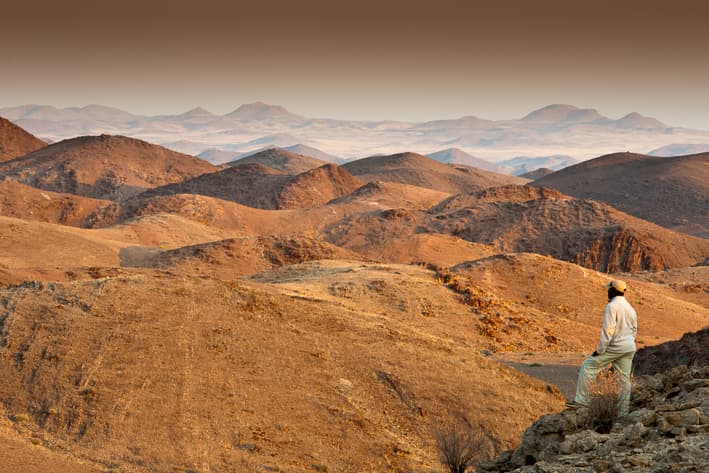
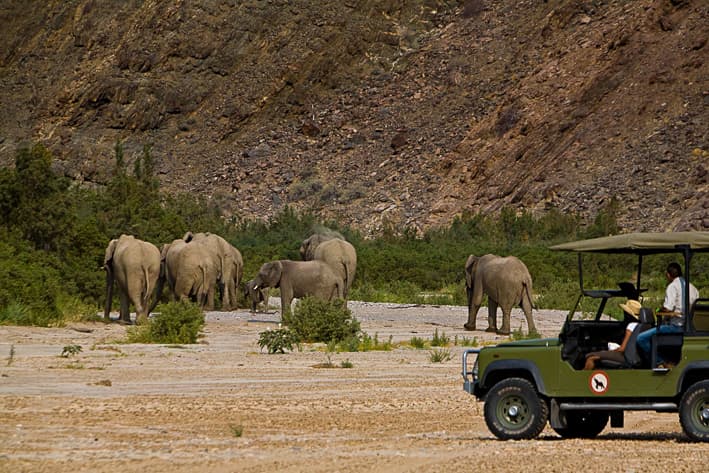
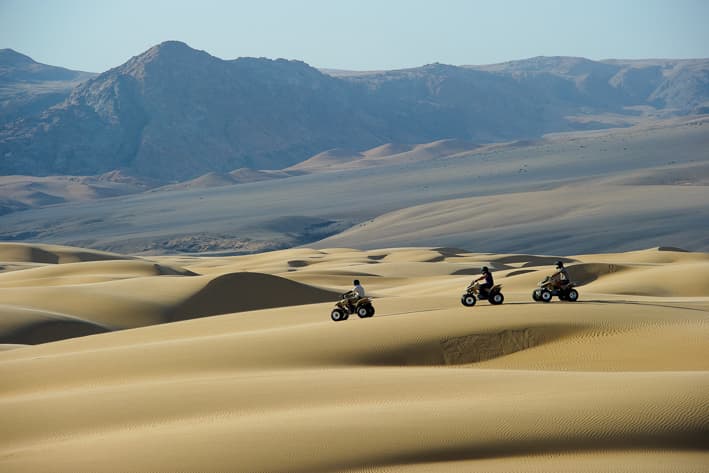
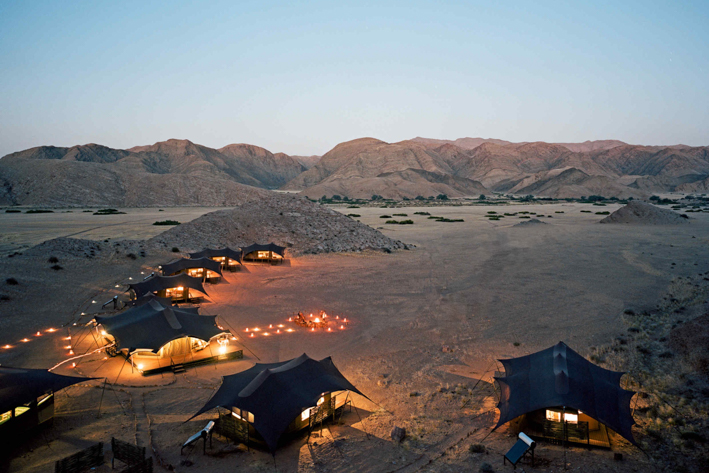
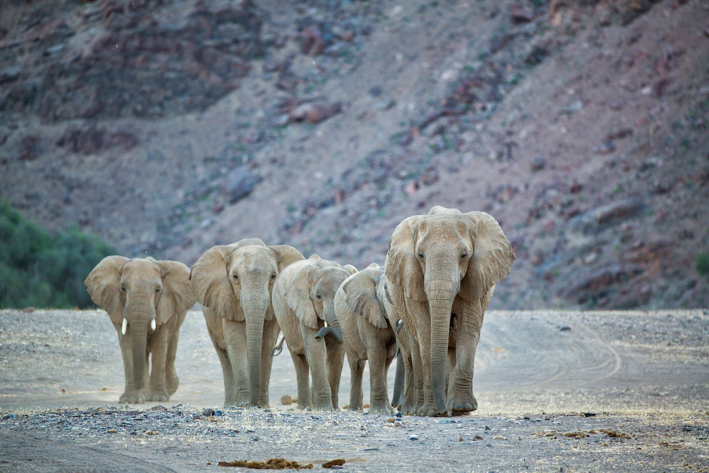
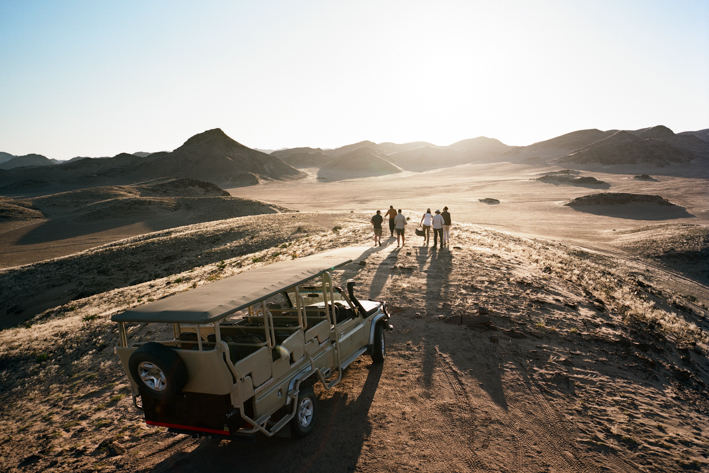
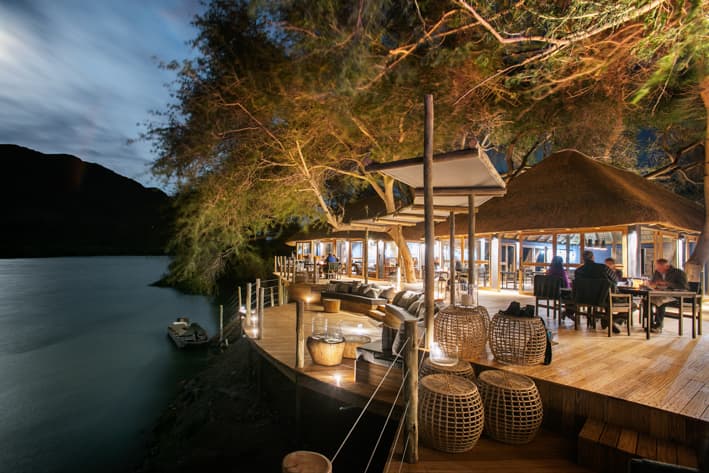
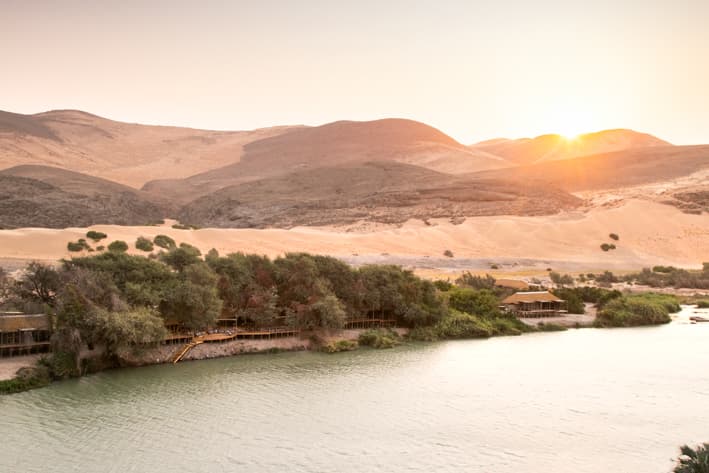
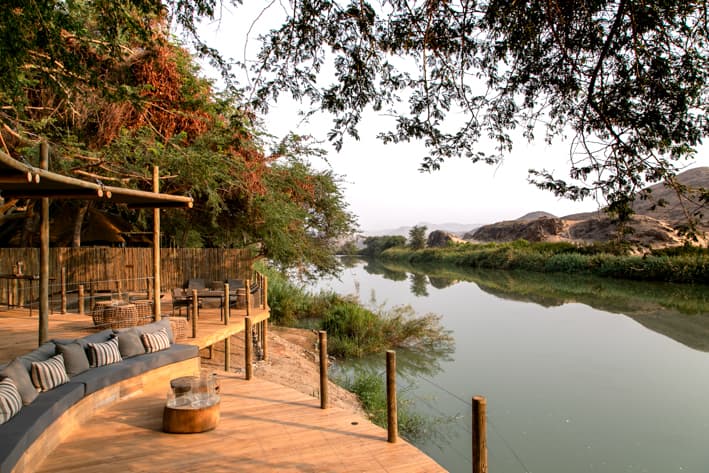
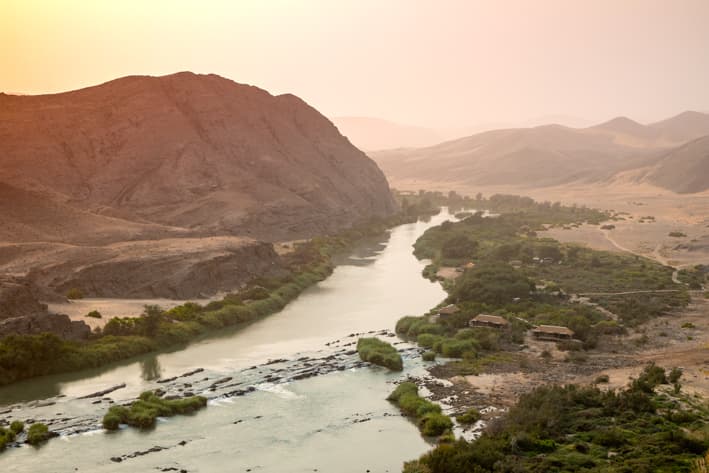
Suggested Itineraries for a Namibia Safari:
Namibia offers plenty of variety in the way of safari itineraries. It’s a great place for a family safari (as we mentioned previously, Shaun’s first safari out of South Africa took place in Namibia) and it’s also a fantastic destination for a self-drive safari.
Whether you’re in search of rustic or luxury, Namibia offers it all! If you’d like some more information, read our Ultimate Guide to Safaris in Namibia blog.
Take a look at our suggested itineraries on our Namibia destination page, to get an idea of what it possible, and then get in touch to start planning the perfect Namibia safari for you.
